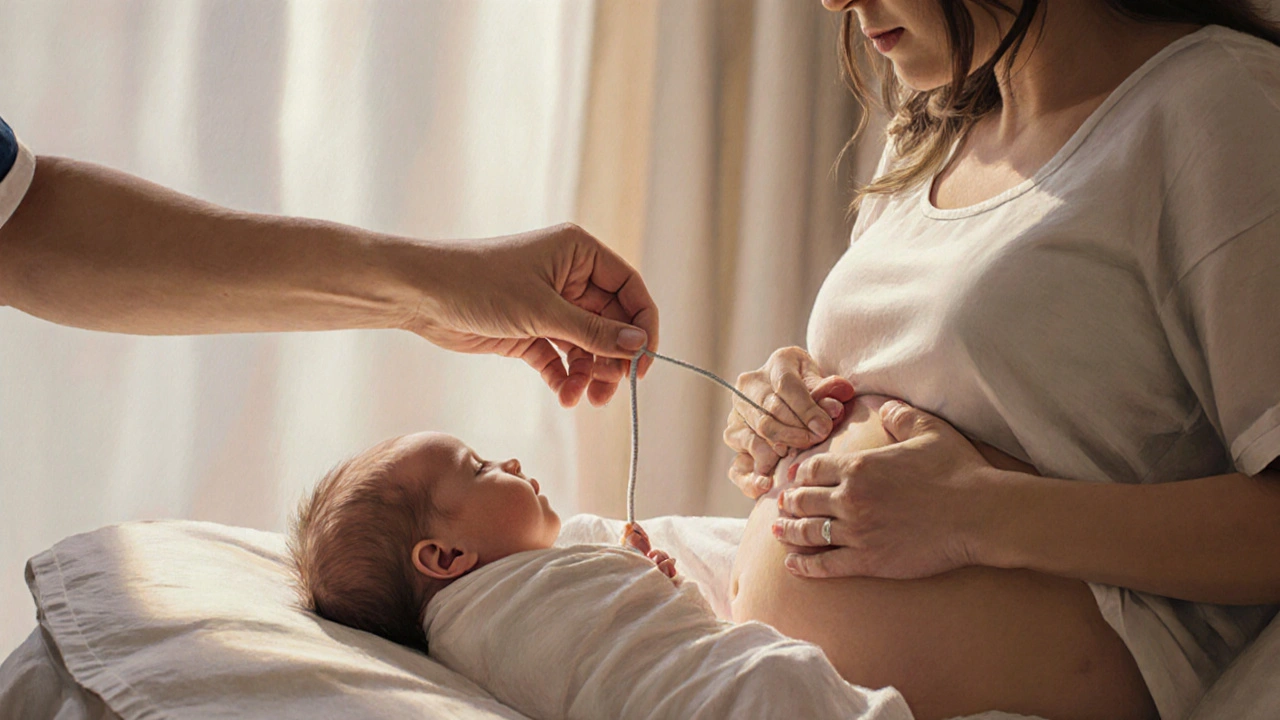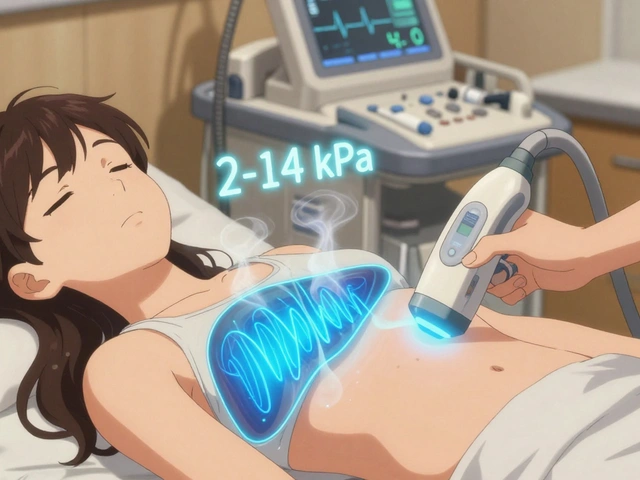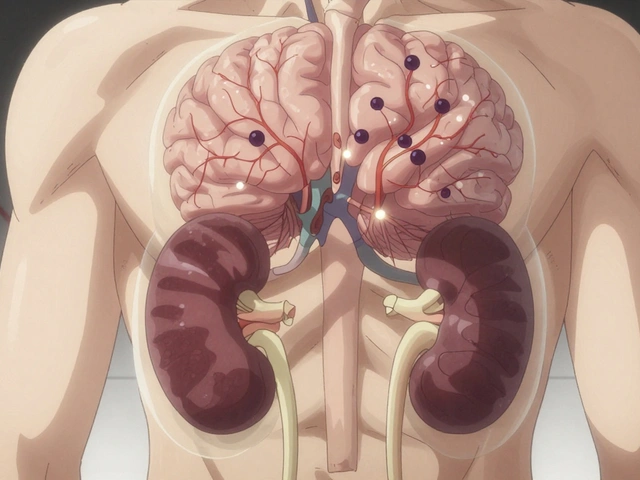Labor Stage Tracker
Track Your Labor Progression
Enter your contraction details to see which stage of labor you're in and what to expect next.
Current Labor Stage
Labor is the process in which the uterus contracts to open the cervix and push the baby out. It normally unfolds in three distinct stages, each with its own signs, duration, and care needs. For anyone preparing for a birth, knowing what happens when can turn anxiety into confidence. Below you’ll find a clear walk‑through of every phase, practical tips, and a quick‑reference table that makes the whole timeline easy to picture.
Key Takeaways
- The first stage (early, active, transition) is the longest, ranging from a few hours to over a day.
- During the second stage you’ll feel the urge to push; most deliveries happen here.
- The third stage is brief-usually under 30 minutes-and involves delivering the placenta.
- Understanding contraction patterns, cervical dilation, and common interventions helps you stay calm.
- Preparing a birth plan, packing your hospital bag early, and having a support person can improve the experience.
Let’s dive into each stage, point out the key milestones, and talk about what you can do to feel ready.
Stage One: The Body Gets Ready
First stage of labor covers the time from the onset of regular contractions until the cervix is fully dilated to 10cm. It is usually split into three sub‑phases: early labor, active labor, and transition.
Early Labor (Latent Phase)
During early labor, contractions start soft and irregular-often feeling like menstrual cramps. Cervical dilation moves from 0cm to about 3cm, and the cervix begins to efface (thin out). This phase can last anywhere from 6 to 20hours, especially for first‑time moms.
What to expect:
- Contractions every 5-20minutes, lasting 30-45seconds.
- Low‑grade pain that can be managed with walking, hydration, or a warm shower.
- Feelings of excitement mixed with impatience; it’s normal to want the “real” labor to start.
Tip: Keep a labor‑log-note the time, length, and intensity of each contraction. This data helps your care team decide when you’ve moved into active labor.
Active Labor
Active labor is defined by more regular, stronger contractions and cervical dilation from 4cm to 7cm. Contractions usually come every 3-5minutes and last about 45-60seconds.
Key signs:
- Increasing pain that may require breathing techniques, massage, or analgesia.
- Clearer vaginal discharge often tinged with blood (the "show").
- Feeling the baby’s head descending into the pelvis.
Many hospitals consider you to be in active labor when contractions are 5minutes apart, last at least a minute, and have been consistent for an hour. At this point, you’ll likely be admitted, hooked up to a fetal monitor, and offered pain‑relief options.
Transition (Late Active)
Transition phase is the final push of the first stage, where the cervix dilates from 8cm to the full 10cm. It’s the most intense 30‑minute window for most people.
What it feels like:
- Contractions every 2-3minutes, lasting 60‑90seconds.
- Strong pressure in the back and rectal area, sometimes described as "the urge to have a bowel movement".
- Feeling light‑headed, nauseous, or emotional; it’s a normal stress response.
Tip: Focus on short‑breathing patterns (e.g., inhale for 4seconds, exhale for 6seconds) and use your support person’s encouragement to ride the wave.
Stage Two: The Push
Second stage of labor begins when the cervix is fully dilated and ends with the birth of the baby. This stage can last from a few minutes up to 3hours, depending on factors like previous birth experience, epidural use, and baby’s position.
Key events:
- Strong, rhythmic contractions that feel like a deep, building pressure.
- The urge to push-your body’s natural reflex to help the baby move down the birth canal.
- Potential perineal stretching; some providers recommend “spoon‑feeding” the baby out in slow, controlled pushes.
Common interventions:
- Epidural analgesia is a regional anesthetic that reduces pain while preserving some motor function. It can lengthen the second stage slightly but often improves comfort.
- Use of forceps or a vacuum extractor if the baby needs assistance.
- In rare cases, an emergency Cesarean section is performed when vaginal delivery poses a risk to mother or baby.
Tip: Practice different positions (hands‑and‑knees, side‑lying, squatting) during prenatal classes. Changing position can shorten the second stage and reduce perineal trauma.

Stage Three: Delivery of the Placenta
Third stage of labor covers the period after the baby is born until the placenta is expelled. It is the shortest phase, typically 5‑30minutes.
What happens:
- Uterine contractions continue, now gently pulling the placenta away from the uterine wall.
- Most clinicians ask you to perform a "milk‑the‑uterus" maneuver-gentle pulling on the umbilical cord while applying pressure on your abdomen.
- The placenta is inspected for completeness; retained fragments can cause postpartum bleeding.
Active management (giving a low dose of oxytocin, controlled cord traction, and uterine massage) reduces the risk of heavy bleeding. If you opt for a natural birth without medication, the placenta usually delivers on its own within a few minutes.
Common Interventions and Choices
Modern obstetrics offers several tools to help you navigate labor. Knowing them ahead of time lets you make informed decisions.
- Epidural analgesia: Provides excellent pain relief but may lower the urge to push and slightly prolong the second stage.
- Birth plan is a written guide outlining your preferences for labor, delivery, and postpartum care. Share it with your provider early; keep it flexible for unexpected situations.
- Water immersion: Laboring in a tub can reduce pain perception and improve relaxation during the first stage.
- Continuous fetal monitoring vs. intermittent checks: Continuous monitoring offers real‑time data but limits mobility; many hospitals allow a mobility‑friendly monitor for low‑risk pregnancies.
- Rooming‑in: Staying in the same room as your newborn right after birth supports early bonding and breastfeeding.
Remember, no single approach fits everyone. Talk with your obstetrician or midwife about pros, cons, and hospital policies well before your due date.
Practical Tips for Expecting Parents
- Pack your hospital bag at least two weeks before the due date. Include comfortable clothing, toiletries, entertainment, and a copy of your birth plan.
- Practice relaxation techniques-deep breathing, visualization, or guided meditation-to use during contractions.
- Stay hydrated and eat light, easy‑to‑digest snacks if you’re allowed to eat during early labor.
- Recruit a support team: a partner, doula, or close friend who knows your preferences and can advocate for you.
- Track labor signs with the "5‑5‑5" rule: if contractions are 5minutes apart, last at least 5seconds, and have been happening for 5minutes, call your provider.
- After delivery, request skin‑to‑skin contact as soon as possible; it stabilizes the baby’s temperature and heart rate.

Stages of Labor at a Glance
| Stage | Typical Duration | Cervical Dilation | Main Goal | Key Signs |
|---|---|---|---|---|
| First stage (early, active, transition) | 6-20hours (first‑time), 3-12hours (experienced) | 0cm → 10cm | Fully dilate the cervix | Regular contractions, "show", increased pressure |
| Second stage | Few minutes-3hours | 10cm (fully dilated) | Deliver the baby | Strong urges to push, intense contractions, crowning |
| Third stage | 5-30minutes | Placenta separates | Expel the placenta and control bleeding | Light after‑birth cramping, cord lengthening |
Frequently Asked Questions
How long does each labor stage usually last?
First stage can take 6‑20hours for a first‑time mother and 3‑12hours for someone who’s given birth before. The second stage ranges from a few minutes up to 3hours, while the third stage is usually under 30minutes.
When should I call my provider during early labor?
If contractions are 5minutes apart, last at least 5seconds, and have been happening for 5minutes (the "5‑5‑5" rule), it’s time to call.
Can I move around during the first stage?
Yes. Walking, rocking on a birthing ball, or taking a warm shower can ease early‑stage pain and help the cervix dilate faster.
What if I want an epidural but my labor progresses quickly?
Talk to your anesthesiologist as soon as you arrive at the hospital. Even a short‑acting epidural can be placed quickly if you request it early in active labor.
How is the placenta delivered safely?
After the baby’s birth, gentle uterine massage and controlled cord traction help the placenta separate and exit. Most hospitals give a low dose of oxytocin to keep the uterus contracting and reduce bleeding.
Next Steps
Now that you know what to expect, use this checklist:
- Finalize a birth plan and discuss it with your provider.
- Pack your hospital bag and have it ready two weeks before your due date.
- Practice a few breathing or relaxation techniques each day.
- Set up a support roster-partner, doula, or friend.
- Download a labor‑tracker app to log contractions when they start.
With preparation and the right info, you’ll feel empowered as your body moves through each stage of labor. Remember, every birth is unique, but the framework above gives you a solid map to navigate the journey.






13 Comments
Caroline Johnson
October 12, 2025Wow, this article tries to simplify labor stages, but it ends up being a chaotic mash‑up of buzzwords!!! The "5‑5‑5" rule is mentioned, yet the author neglects to explain why it matters-seriously??? The tables are cluttered, the code snippet is irrelevant, and the tone swings from clinical to blog‑post nonsense. You could have at least streamlined the key points instead of sprinkling random HTML snippets everywhere!!! Also, why is the “quick comparison” table missing units for dilation? The reader is left guessing, which is unacceptable for such a critical topic. Overall, this feels like a half‑baked attempt at a guide, not a reliable resource!!!
Sumeet Kumar
October 17, 2025Hey there! I love how you broke down each stage-super helpful for anyone getting ready 🙌. The "5‑5‑5" rule is a lifesaver, and the checklist at the end is a nice touch 🙂. Just a heads‑up: many hospitals now allow low‑key mobility‑friendly monitors, so you might want to add that under "continuous vs intermittent". Keep the tips coming! 😊
Maribeth Cory
October 22, 2025This guide hits all the right notes for first‑time parents. I especially appreciate the emphasis on breathing techniques during transition-so many people overlook that. The reminder to pack a hospital bag two weeks early is a game‑changer; I learned that the hard way. Also, the tip about “milk‑the‑uterus” after delivery is practical and often missed in other articles. Keep empowering families with clear, actionable info!
andrea mascarenas
October 26, 2025Great overview. The bullet points are clear and the language is easy to follow.
Tara Phillips
October 31, 2025It is with utmost respect and sincere enthusiasm that I commend this comprehensive exposition of labor stages. May this resource serve as a steadfast companion to all expectant parents, guiding them with poise and confidence toward a joyous arrival.
Derrick Blount
November 5, 2025One might argue that labor, in its essence, is a profound negotiation between physiology and psychology; indeed, the article touches upon this dialectic, yet it could delve deeper. For instance, the interplay of oxytocin release and maternal perception of pain merits a richer discussion; consider the cascade of neuroendocrine events that accompany each contraction. Moreover, the omission of cultural birthing practices leaves a notable gap-perhaps a comparative analysis would enlighten readers. In any case, the structural layout is commendable; the progression from early labor to placental delivery follows a logical schema. Nonetheless, precision regarding the timing of epidural administration could benefit from citing recent obstetric guidelines.
Brittany McGuigan
November 10, 2025Honestly, this is a overrated piece; it tries to sound professional but slips into casual misspelling like "its" instead of "it's"-pretty unacsential for a medical guide. The tone tries to be formal yet fails to maintain consistency; you see sentences like "Really helpful tip" followed by "The uterine contraction"-mixed messages? Also, the table lacks proper alignment, making it hard to read. If you want credibility, proofread before publishing, otherwise readers will lose trust.
Priya Vadivel
November 15, 2025What a thorough piece, and I truly appreciate the balance between clinical details and practical tips, especially the emphasis on hydration, movement, and the "5‑5‑5" rule, which can be a lifesaver for many families; the inclusion of both medical and emotional aspects makes it feel holistic, and the clear headings guide the reader smoothly through early labor, active labor, transition, and beyond, while the reminder about postpartum skin‑to‑skin contact adds a warm, supportive note at the end.
Dharmraj Kevat
November 19, 2025Labor is a wild ride and this guide captures that drama with flair
Lindy Fujimoto
November 24, 2025Okay, I’m just going to say it: this article is a masterpiece-truly. 😎🌟 It breaks down the stages with such clarity that even my grandma could follow along. The emojis are a nice touch, adding a splash of personality (and I’m all about that). But let’s be real-some sections feel a tad dense, so maybe a few more bullet points would keep readers engaged. Overall, bravo! 😊👍
darren coen
November 29, 2025This guide is clear and useful.
Jennifer Boyd
December 4, 2025Wow, what a supportive read! I love how each phase is paired with encouraging tips-especially the breathing suggestions during transition. The tone feels like a friend holding your hand through the whole process, which can be incredibly comforting for nervous parents. Adding a reminder to celebrate small milestones, like the first "show," adds a nice emotional boost. Keep spreading this positivity!
Lauren DiSabato
December 9, 2025Honestly, if you’re looking for a surface‑level overview, this is fine, but anyone seeking depth will find it lacking. The author seems to think a simple list suffices, neglecting nuanced discussions about cultural variations or evidence‑based pain‑management statistics. It reads like a generic blog post rather than a scholarly resource-just saying.